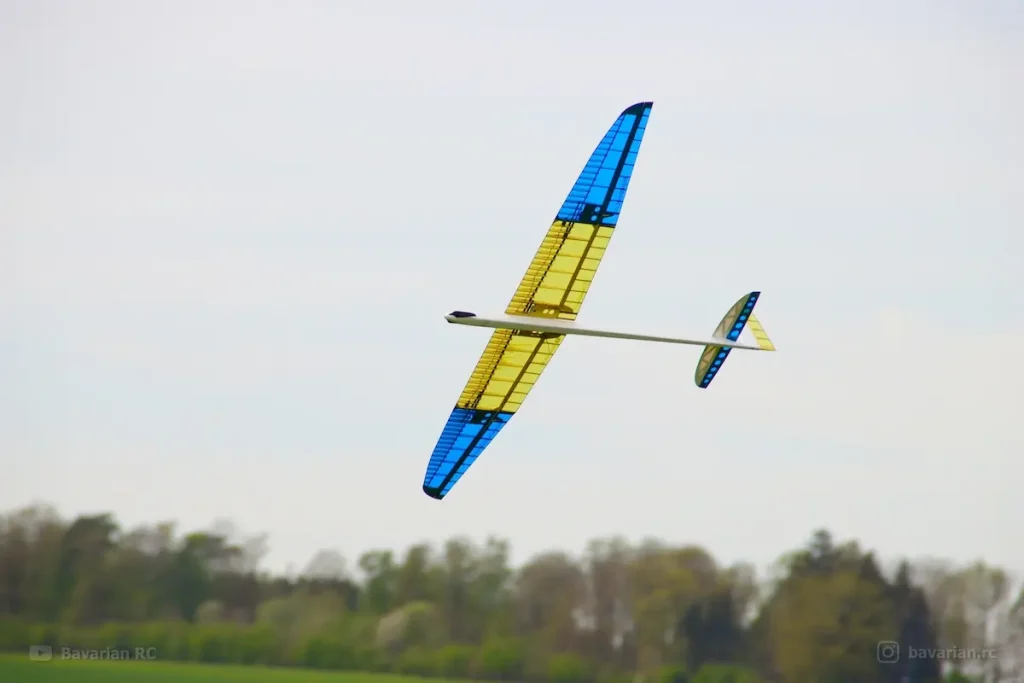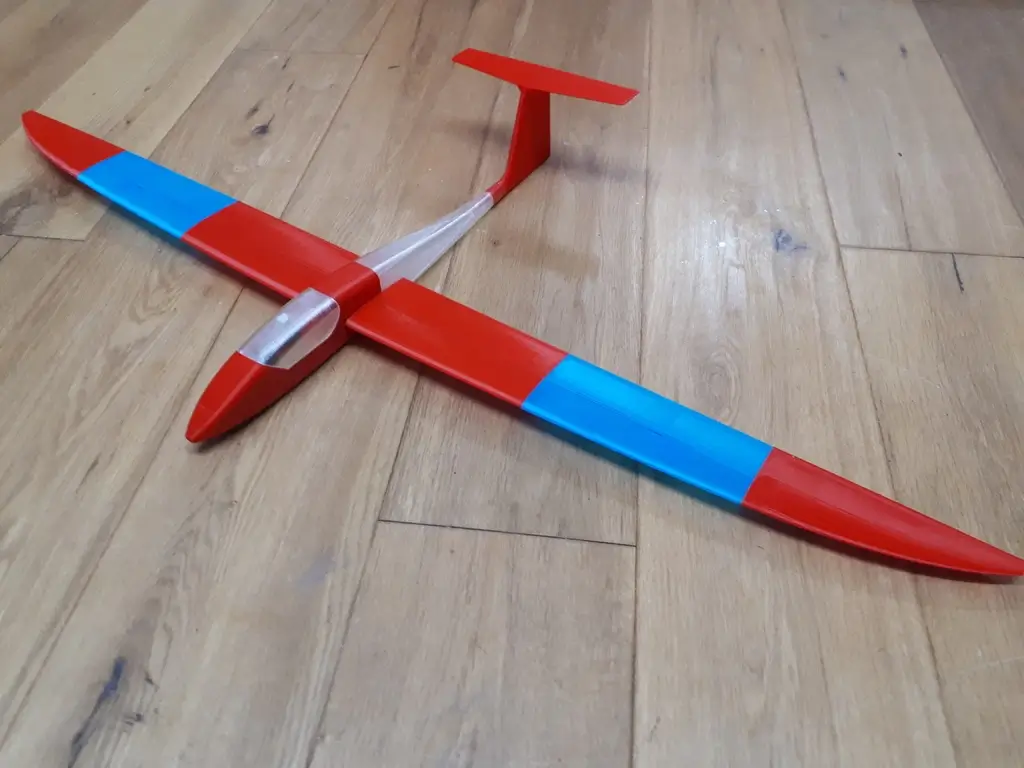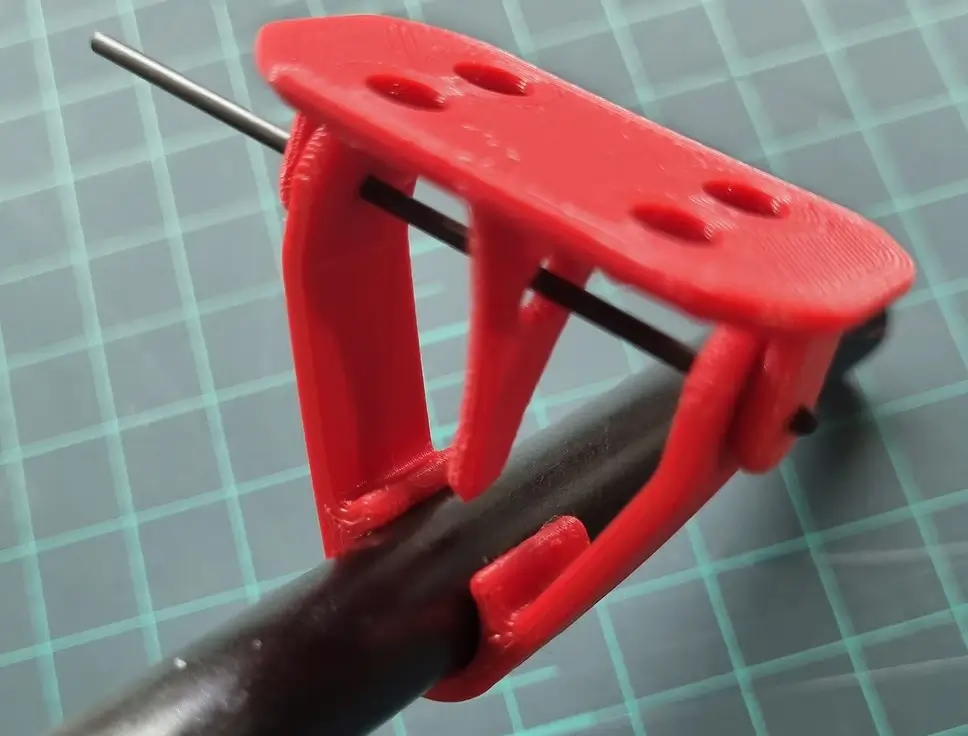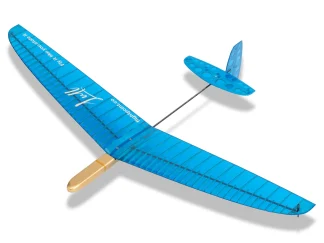
3D Printed RC Gliders rushed into the RC Hobby like a fresh ocean breeze on a hot day.
Not only gliders but many more RC flying categories as well.
With access to this technology, you can create almost any RC glider, with just a roll of a decent filament 😉
Of course, there are pros and cons to the 3D Printed RC Gliders, but the greatest argument for it – is the simplisity of entering the hobby with a neat-looking plastic model.
In addition, a lot of competition RC Gliders, also use 3D printed components and parts.
Check out the Lull DLG as a great example of the above.
So, in this article, you’ll find both: the full modes and useful parts.
Let’s dive in and explore our collection of free & ready-to-print 3D models.
Quick links:
- Ready-To-Print Free RC Glider Models
- Lidl Glider Conversion Kit
- Tailplane V-Mounts
- Servo Frames
- Mounts & Stands
- Tow Release Systems
- Radio Transmitter Mods
- Misc DLG and F3K Parts
- Bonus: Paid 3D-Printed RC Glider Models
Alternatives To 3D Printed Gliders?






Just a couple of quick notes regarding the alternative, or better to say “traditional” built RC Gliders: Balsa, Composite, Foam…
- You have to master 3D printing to get a good result with your first model. Otherwise, it may be a pain…
- Fully printed airframes are mostly heavy and fragile, so should be handled with care. This is something beginner pilots need to learn… Foam RC Glider might be a better choice then.
- Often, printing an RC glider won’t be more cost-effective than building a similar model from balsa a kit, or buying an RTF composite model, especially a used one.
- In the case of RC Gliders, where wing loading matters a lot, 3D printing isn’t just the best choice for a model.
Please, consider all the pros and cons of 3D printing, while starting your new project.
And have a look at our best sellers – some may catch your eye.
Now, let’s get back to printing 😉
Complete 3D Printed RC Gliders
Let’s start with the complete models.
These can get you in the air, at least once 😉 in literally no time.
Print. Fly. Crash. Repeat.
One of the things that all these models have in common is an increased weight compared to the composite or built-up balsa wood constructions.
Due to this fact, most of the 3D printed RC Gliders are designed for slope soaring, since the increased weight only helps penetrate the stronger winds.
Now, let’s see these models.
Crobe Slope Glider
Crobe Glider is a great example of using 3D printing technology to its best.

It leverages the pitcheron design when the main wings twist on the spar according to the pilot’s control input.
The V-tail is made of light balsa sheets to make it light and nimble and save the weight on the tail.
It ended up being a great construction with simple control linkages and plenty of space for your RC components
Btw, Caracara, is a powered version of the Crobe, in case you prefer to have the motor in front
SZD 55 or Nexus 900 – A Pitcheron For Slope Flying
This is another design, that is specifically made to leverage the 3D Printing capabilities where it belongs.
A little scale Nexus 900 glider uses a carbon spar and a pitcheron control layout, the same as the first model in our list, but features a T-tail instead.
Great little glider to build if you have a powerful slope spot nearby.

Nucking Futs – 3D-Printed Pylon Racer and Slope Bullet
If you prefer a more traditional control layout over the pitcherons above, have a look at the Nucking Futs.
It offers classic ailerons & T-tail along with numerous options for wingspan, fuse length, and motor installation.
Have a look, and choose the parts to print wisely, depending on your flying conditions and locations.
Nucking Futs is a great candidate for a fast slope soarer, as it offers a thin wing profile and a low-drag fuselage.

Fully 3D-Printed DLG – the Bug
Discus Launch Gliders are mostly produced with composite technology lately since the model survives a lot of twisting and bending force using the launch and should stay in one piece after it.
The Bug, though, is a popular model covered in another article with built-up RC Gliders that uses the balsa & carbon construction to sustain these forces and stay light and nimble.
Now it is also available in a 3D-printed design.

The model smartly combines printed parts with covering film while leaving the option for the balsa or fully printed tails depending on your building preferences.
Come check it out, since it is a great candidate for experimenting with your 3D printer.
3D-Printed RC Glider Parts
Regardless of all the new materials and tech that come out over and over again, 3D Printing is still not there for creating an RC Glider in full.
In other words, it is indeed easy to print an RC glider, however, the weight and strength penalty will be the main disadvantage of such an airframe compared to the composite, wooden, or combined construction.
On the other side, 3D Printing offers an easy and fast option to create complicated parts, unique or in small batches.
I.e. one of our balsa DLG kit is using a 3D-printed tailplane mount as a part of the original design.
Alongside, most of the molded carbon birds have various printed parts in their construction.
It also offers extreme flexibility to make changes to the 3D models and adjust the results of the prints.
These, are just some of the reasons why 3D Printing is widely used in making parts of RC gliders.
Luckily, there are a lot of ready-to-print models lying around, so below we collected the most prominent ones.
Lidl Chuck Glider Conversion Kit
Lidl Glider is a free-flight EPP chuck glider that you can buy, obviously, in Lidl stores around the world.
Its size, price, and build quality make it a great candidate for the RC Conversion.
And this is exactly what a lot of RC pilots do!

To make things easier feel free to use the Lidl Glider conversion kit that contains a bunch of parts, starting with the servo frames and ending up with the camera holder 😉
And another option for a proper pitcheron setup.
A must-have for a seamless conversion.
Tailplane V-Mounts
V-Mounts are, IMHO, the neatest way to install the tailplane on the RC glider.

And yeah, there are some pros and cons of this type of mount, it looks amazing.
So, there are a few options for various model sizes:
Option 1 for 6, 8, 10mm booms
Option 2 for 7mm boom
Option 3 for 13 and 18mm booms
Servo Frames
Custom-designed servo frames make any build look and feel professional reliably securing your gear in place.
Most of the competition RC Glider Kits come with the servo frames included in the basic accessory pack, but in case you are missing one, there are a variety of 3D Printing Files available online.

So, pick what you need for your build and hope it will add a touch of security to your gear mounting 😉
Option 1 – a collection of wing mounting frames for the most popular DLG servos with adjustable master model.
Option 2 – a long fuselage tray for a pair of KST X08
Option 3 for flat/wing-mounted KST X08H
Option 4 for flat/wing-mounted KST X10
Option 5 for Chaservo LV06H or HV06H designed for Concept CX5 DLG
Option 6 for four flat-mounted KST X08 specially designed for Snipe DLG
Option 7 for four MKS75 servos specifically designed for vdFalcon DLG
Option 8 for three Blue Bird BMS101 servos specifically designed for Malibu Pro DLG
Tow Release Systems
Scale RC Gliders are one of the few RC Glider classes that use aerotow to get to altitude.
Regardless, if you need an easy-to-make tow-release mechanism, 3D Printing comes in handy once again.

Moreover, there are some great free models that you can print and experiment in no time.
Option 1 for Hitec HS55 or HXT900 Servo
Misc DLG & F3K Parts
Last but not least, there are some 3D models that we didn’t include in the previous categories, but couldn’t miss them.

These are designed to be used with various aircraft serving different purposes.
Hope you will find these useful:
Launch T-Peg Mould for a DLG glider
Motor Pylon for DreamFlight Libelle DLG
Nose Cone for Vladimir Models 1-meter Elf DLG
Ballast Holder for Vladimir Models Snipe F3K Glider
Ballst Holder for Concept CX-5 F3K Glider
Universal Servo Pulley for RC Glider
Magnetic Control Surface Throw Meter
RC Glider Mounts & Stands
A reliable wall mount or field stand is a great way to store and keep your expensive RC glider safe.
There are various options available online that will meet most of your requirements.

Come check them out!
Option 1 – tripod-mounted holder for F3K glider
Option 2 – Adhesive F3K Wall Mount
Option 3 – Pug DLG, Alula Wall Mount, compatible with other gliders
Option 4 – Field stand for 1.5-meter F3K glider
Option 5 – Wall Mount for 1-meter DLG Glider
Option 6 – Double DLG Field Stand and Carrier
Radio Transmitter Mods
When you need to modify your radio transmitter for some specific tasks, 3D Printing comes to mind first, no doubt.
And if you are skilled enough to create a 3D model yourself – that’s awesome.
Otherwise, attempt to search online, maybe someone has already created something you can reuse.
Radiomaster Boxer Internal Antenna Mod
I.e. Radiomaster Boxer is a great little radio, that shares a neat form factor and offers a lot of perks, like built-in ELRS, AG01 gimbals, etc.
But the thing that annoys some people is a sticking antenna, which breaks the slick shape of the radio…
Here you are – a small part that acts as a new antenna holder and a cap for antenna opening in the radio.
All you need is a screwdriver and a skill to open up the radio and replace the stock antenna

A Neat Wind Streamer Holder for FrSky X-Lite
At some point, FrSky X-Lite became one of the top choices for a DLG radio.
The reasons are quite obvious – it’s light, compact, and runs OpenTX firmware offering (almost) unlimited programming opportunities.
Considering RC glider pilots pay a lot of attention to wind shifts while flying, a lot are mounting wing streamers to their radios.
And if you are a lucky owner of the FrSky X-Lite radio, here is a neat wind streamer holder for an external module bay cover.
Snap-on installation and no other modifications are needed for your radio.
Bottom Line
So, how do you use 3D printing for RC Gliders?
Please, share your story in the comments below!
Psst…
there is one…
a few more things 😉
Paid RC Glider Models For 3D Printing
Alongside the free ones, a couple of paid RC Glider 3D models are worth attention to.
Unlike the free ones, these, usually get proper testing, so you won’t need to go the trial-and-error path as often required with the freebies.
So, come check these out:
Joker – 1700mm by 3DLabPrint

Aeron – 2300mm by PlanePrint

PlanePrint also has a few other models that might catch your eye.
Which one you’d like to try?
Or do you own a 3D-printed RC Glider?
Share your experience in the comments below.



Fantastic many thanks